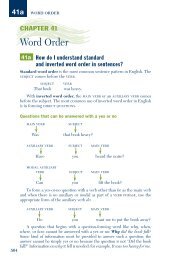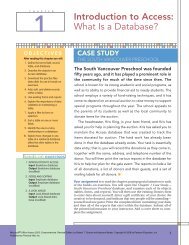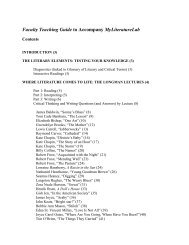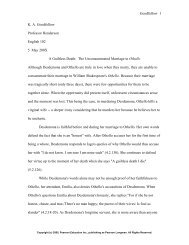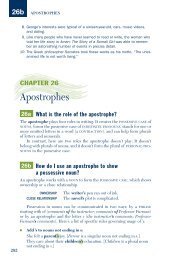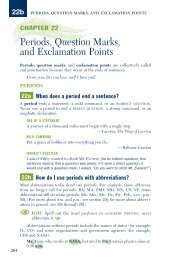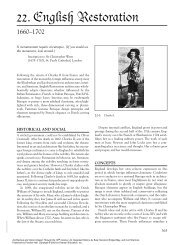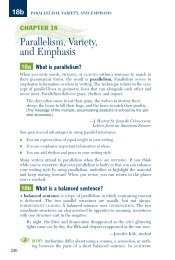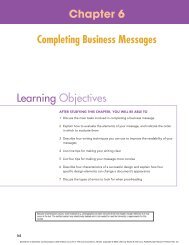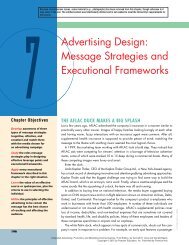chapter 3 - Pearson Learning Solutions
chapter 3 - Pearson Learning Solutions
chapter 3 - Pearson Learning Solutions
You also want an ePaper? Increase the reach of your titles
YUMPU automatically turns print PDFs into web optimized ePapers that Google loves.
2009934667<br />
Complementing Relationship<br />
Chapter 3 Nonverbal Communication 63<br />
Body language can complement a verbal message. For example, shaking your head<br />
horizontally from side to side while saying no reinforces the negative verbalization.<br />
The simultaneous saying and doing creates a nonverbal complementing relationship,<br />
in which a nonverbal message accompanies a verbal message and adds dimension<br />
to communication.<br />
Conflicting Relationship<br />
A person’s physical movements sometimes can conflict with his or her verbal message.<br />
For example, suppose a professor is confronted by a student after a class<br />
session. The student asks, “May I speak with you?” The professor says, “Sure, I have<br />
lots of time.” While making this reply, however, the professor is packing books,<br />
glancing at the clock, and taking several steps away. A conflict exists between the<br />
verbal and nonverbal messages.<br />
When actions conflict with verbal messages, thus forming a conflicting<br />
relationship between the verbal and nonverbal, the receiver should rely more on<br />
the nonverbal aspect of communication. Nonverbal clues often are more difficult<br />
to fake than verbal ones. When you were young, you might have been surprised<br />
to find that your parents knew when you were not telling the truth. There you<br />
stood, looking at the floor, twisting your hands, with a flushed face, as you insisted,<br />
“I didn’t do it.” The father of the modern psychology movement said, “He that has<br />
eyes to see and ears to hear may convince himself that no mortal can keep a secret.<br />
If his lips are silent he chatters with his fingertips; betrayal oozes out of him at<br />
every pore.” 22<br />
Lie detectors read the body’s nonverbal reactions by measuring changes in<br />
blood pressure, respiration, and skin response—in other words, by attempting to<br />
detect a conflicting relationship between the verbal and the nonverbal. This is<br />
Communicating: A Social and Career Focus, Tenth Edition, by Roy M. Berko, Andrew D. Wolvin, and Darlyn R. Wolvin. Published by Allyn & Bacon.<br />
Copyright © 2007 by <strong>Pearson</strong> Education, Inc.<br />
Body shifts can encourage<br />
or discourage conversation.




